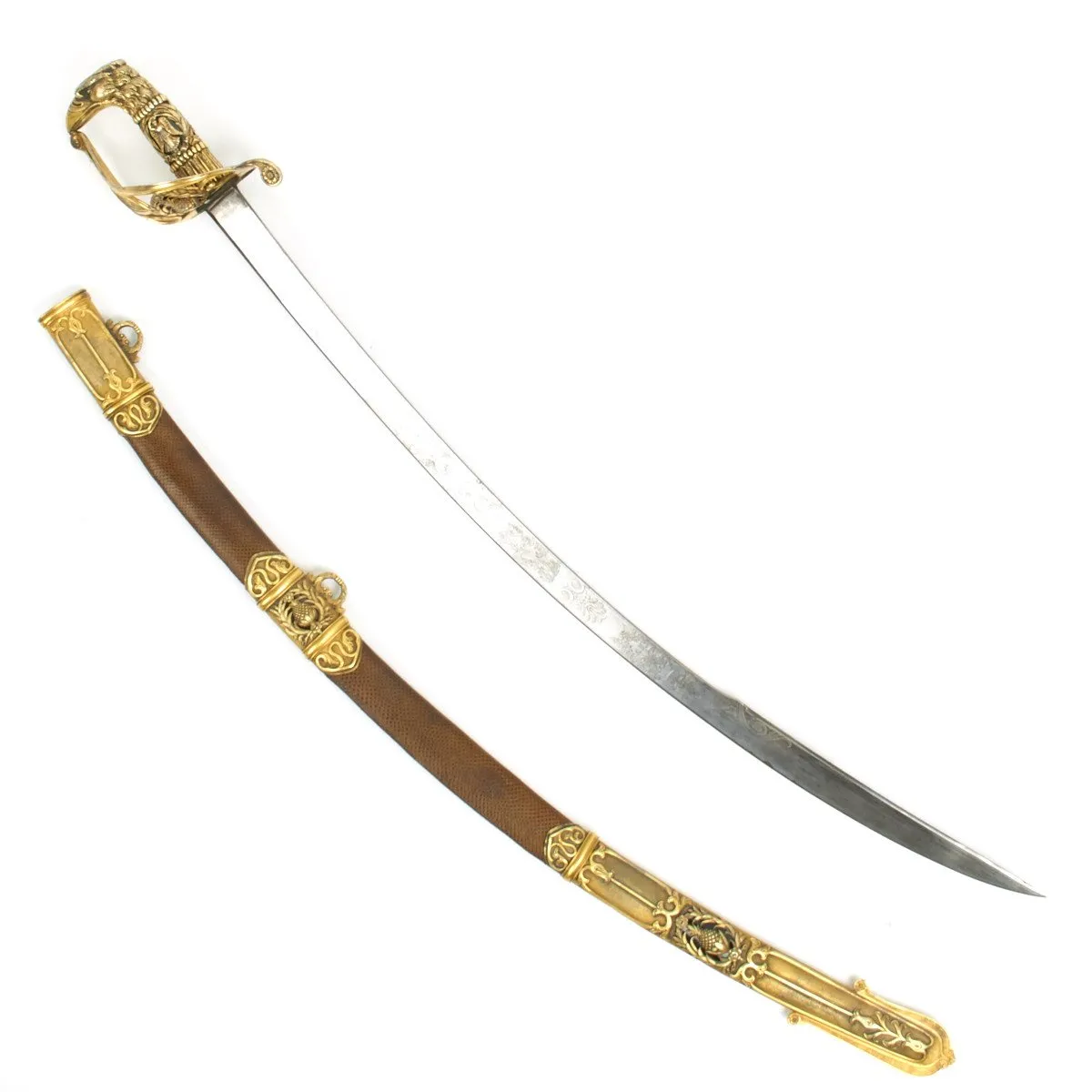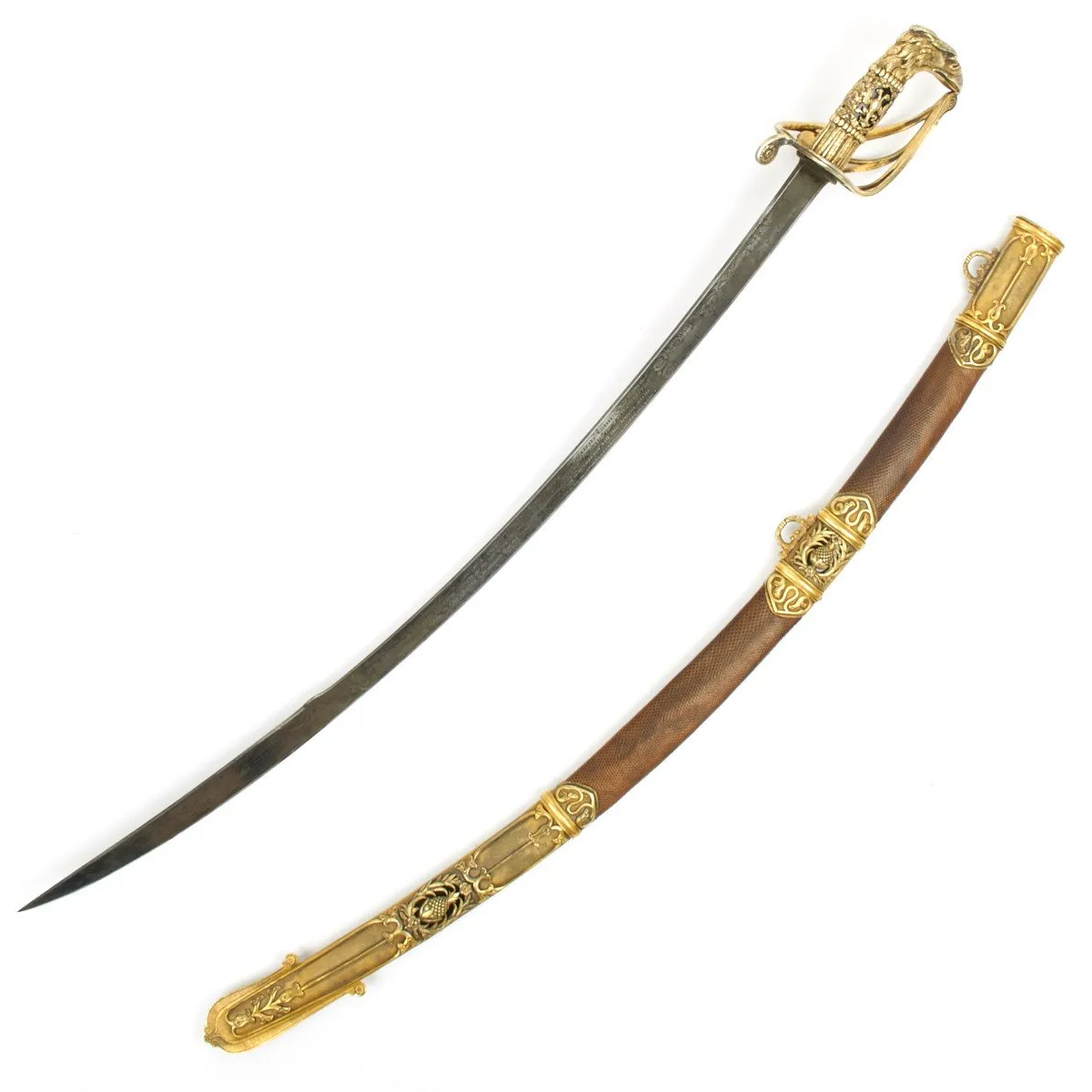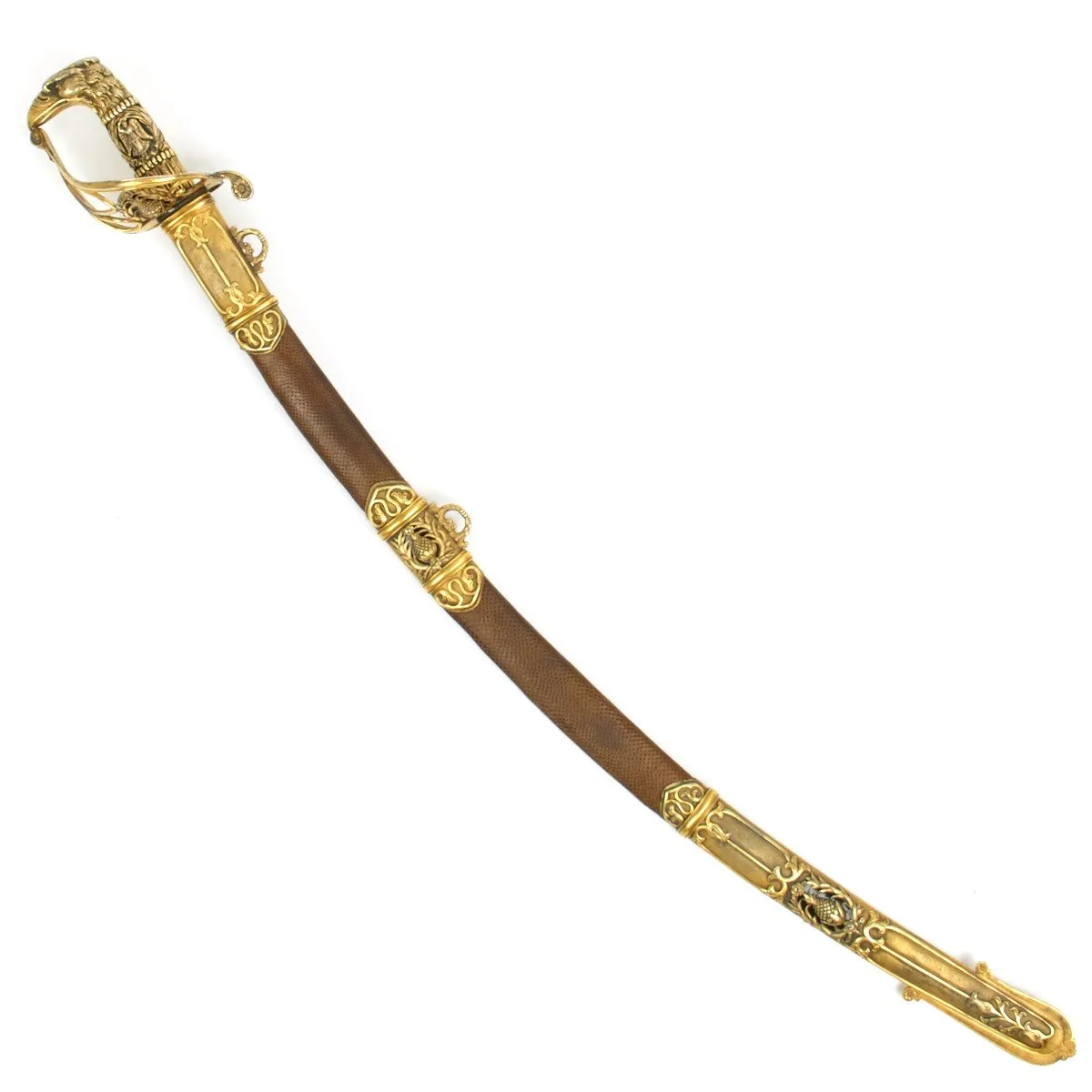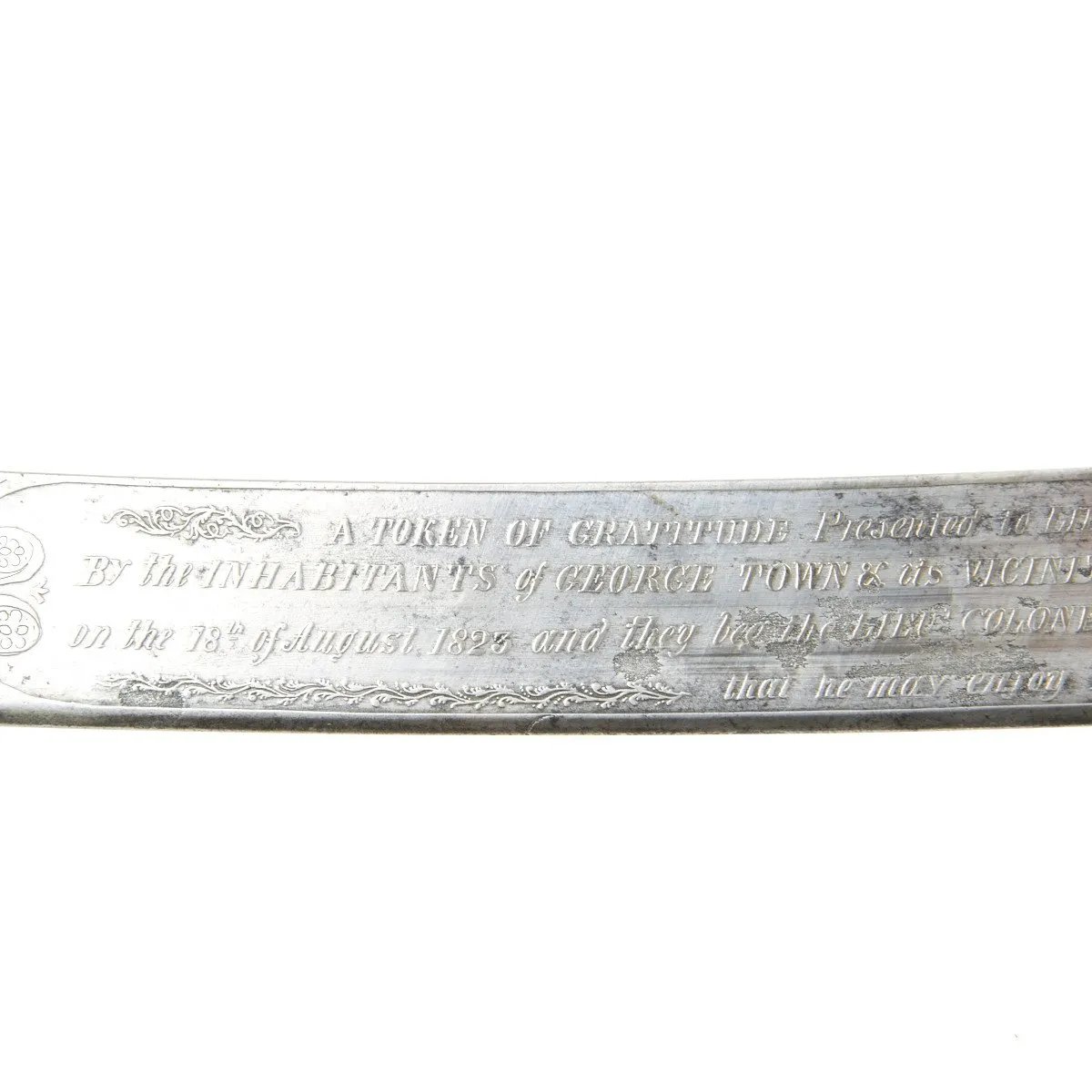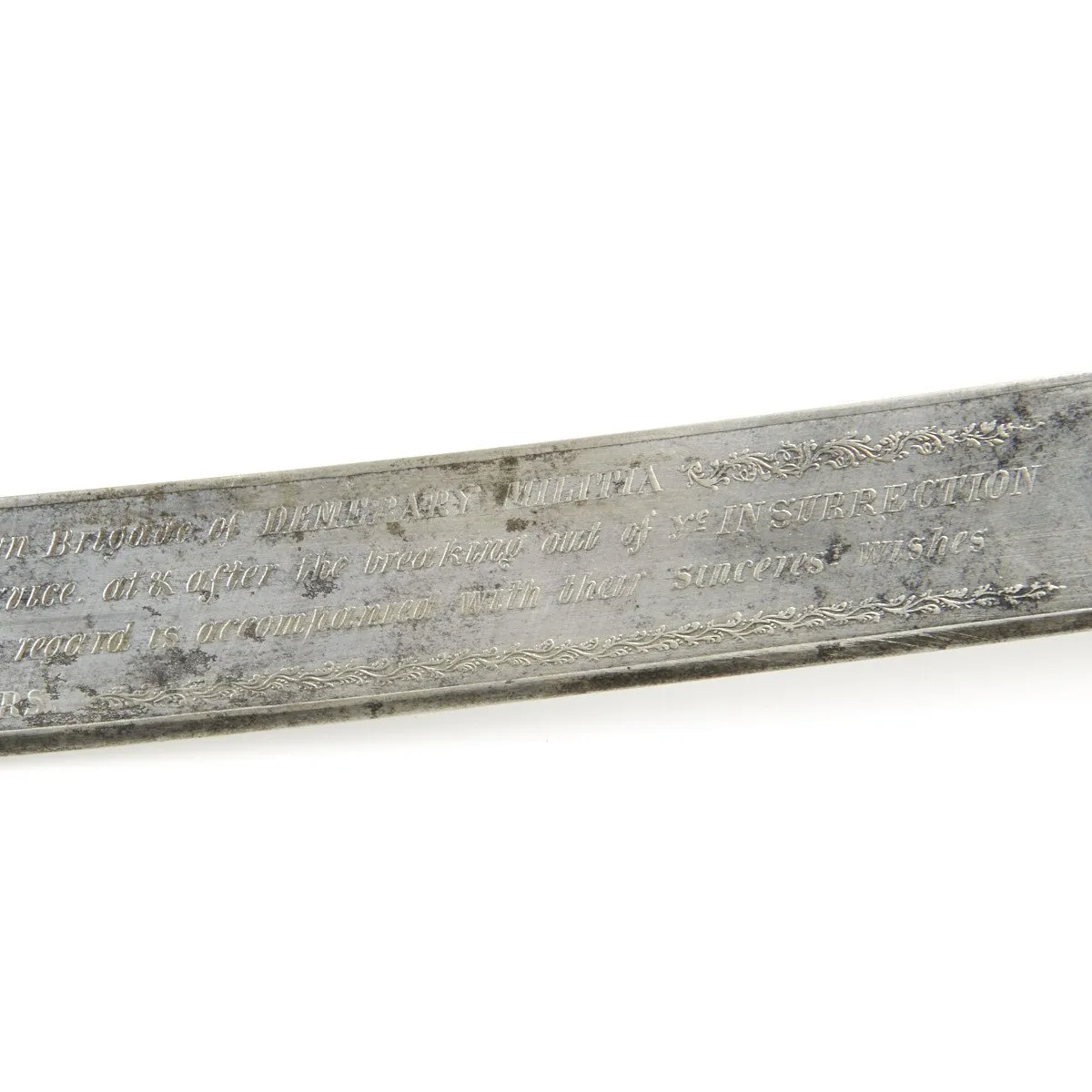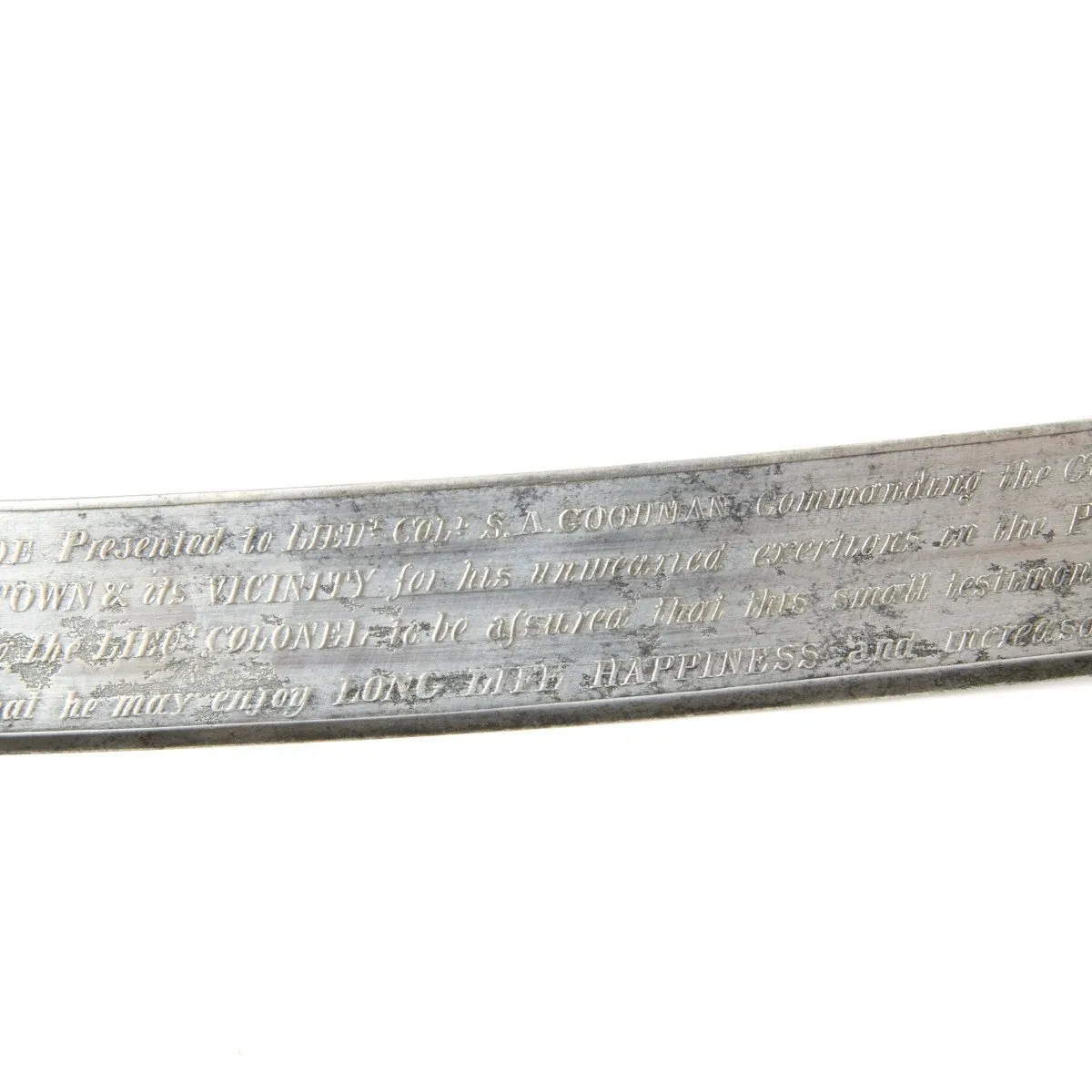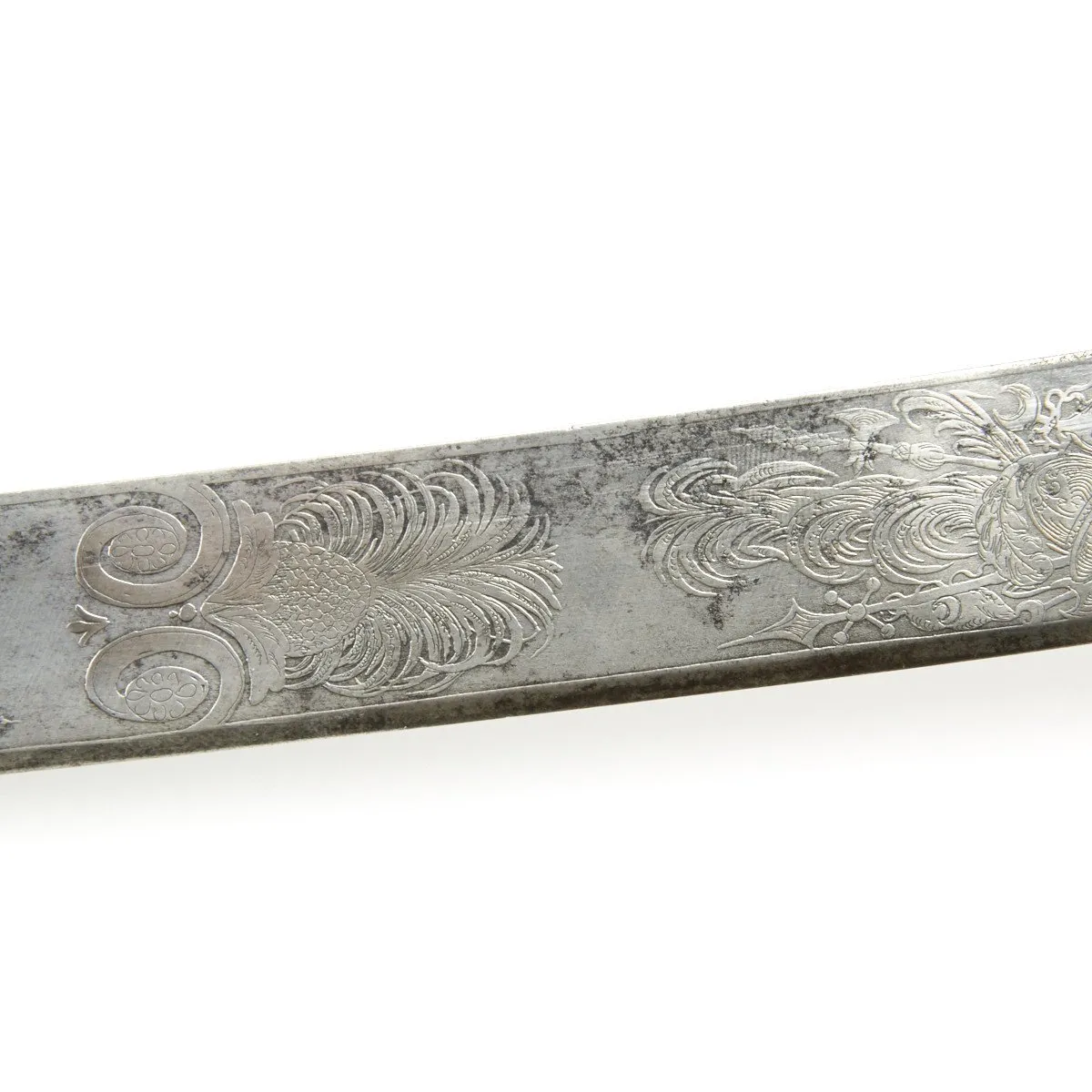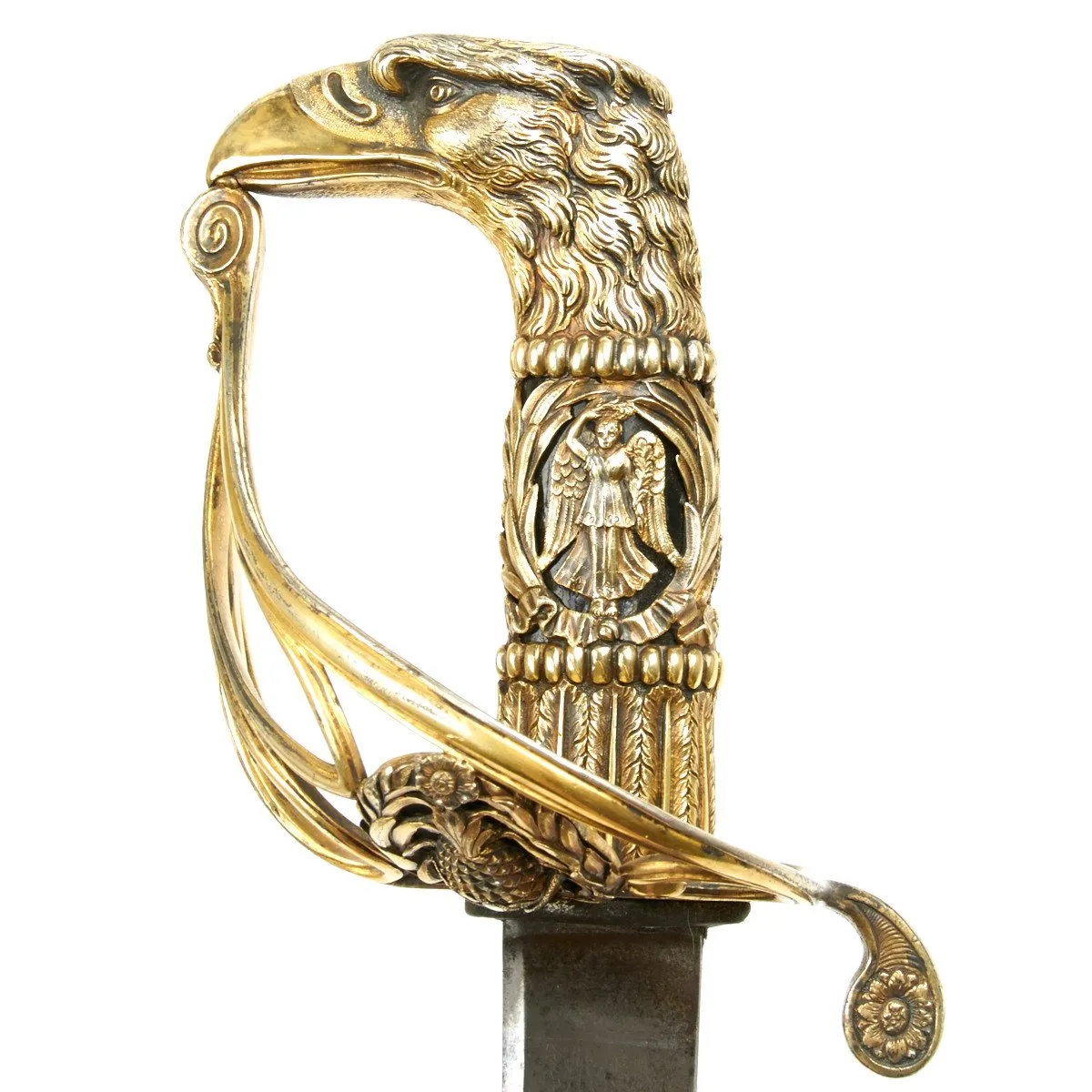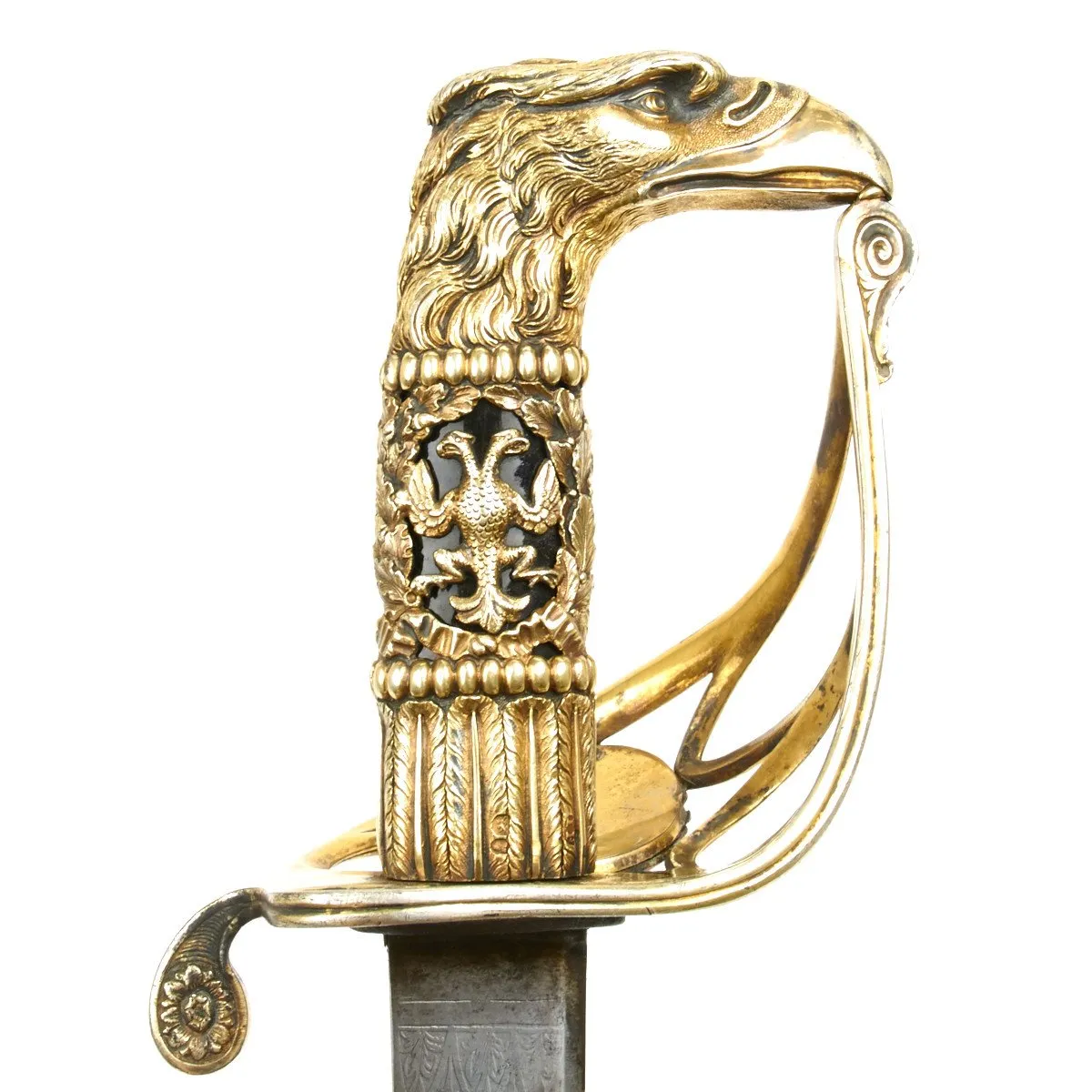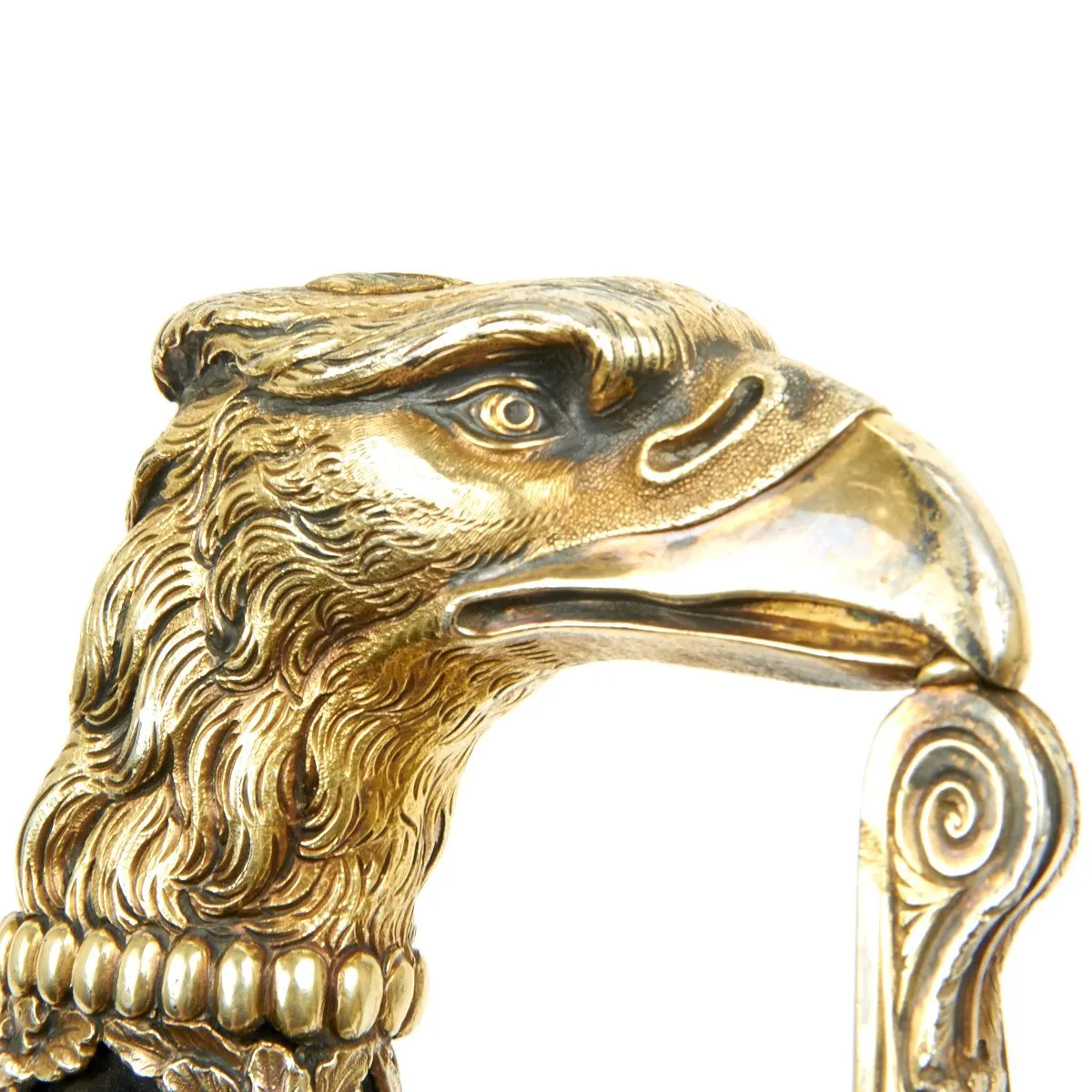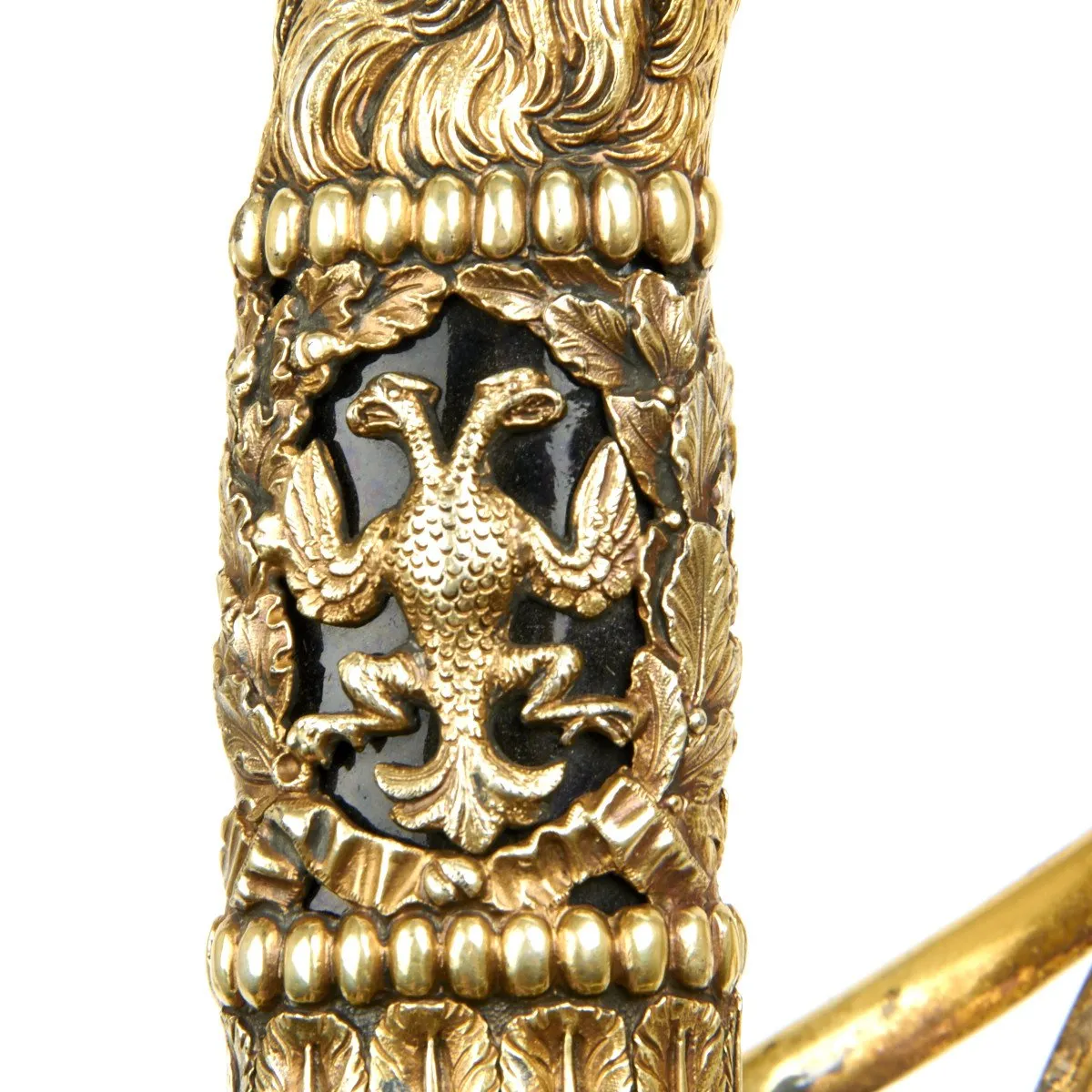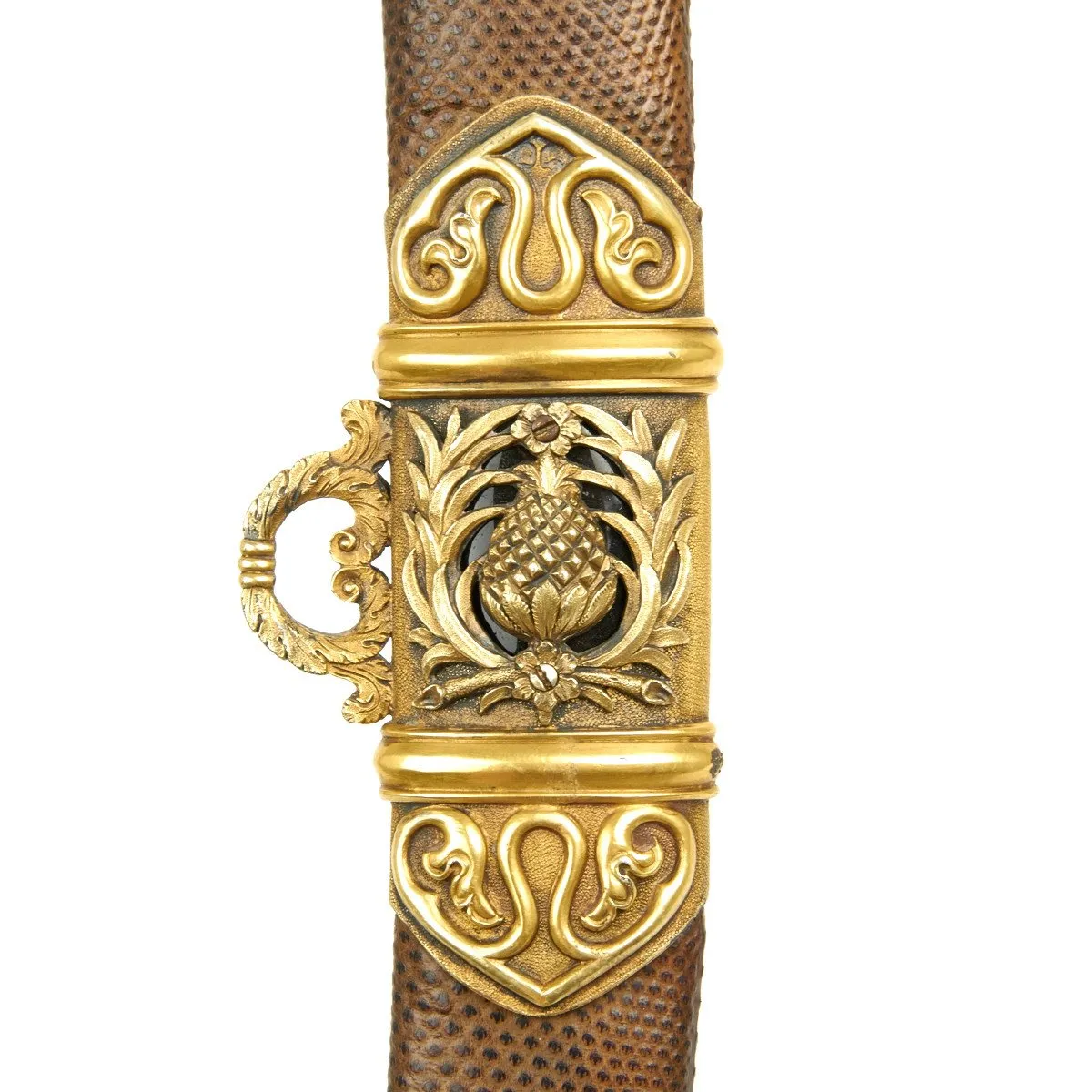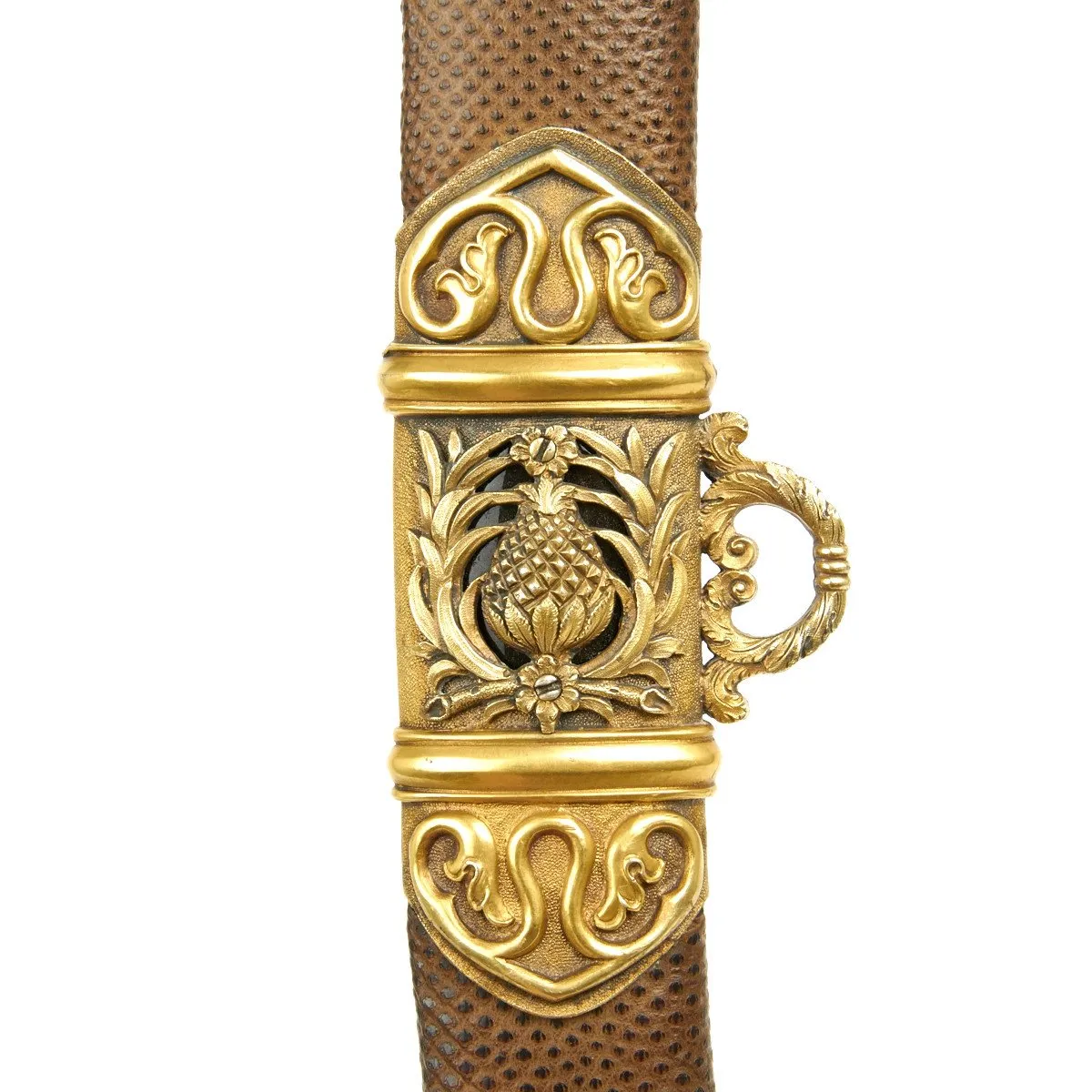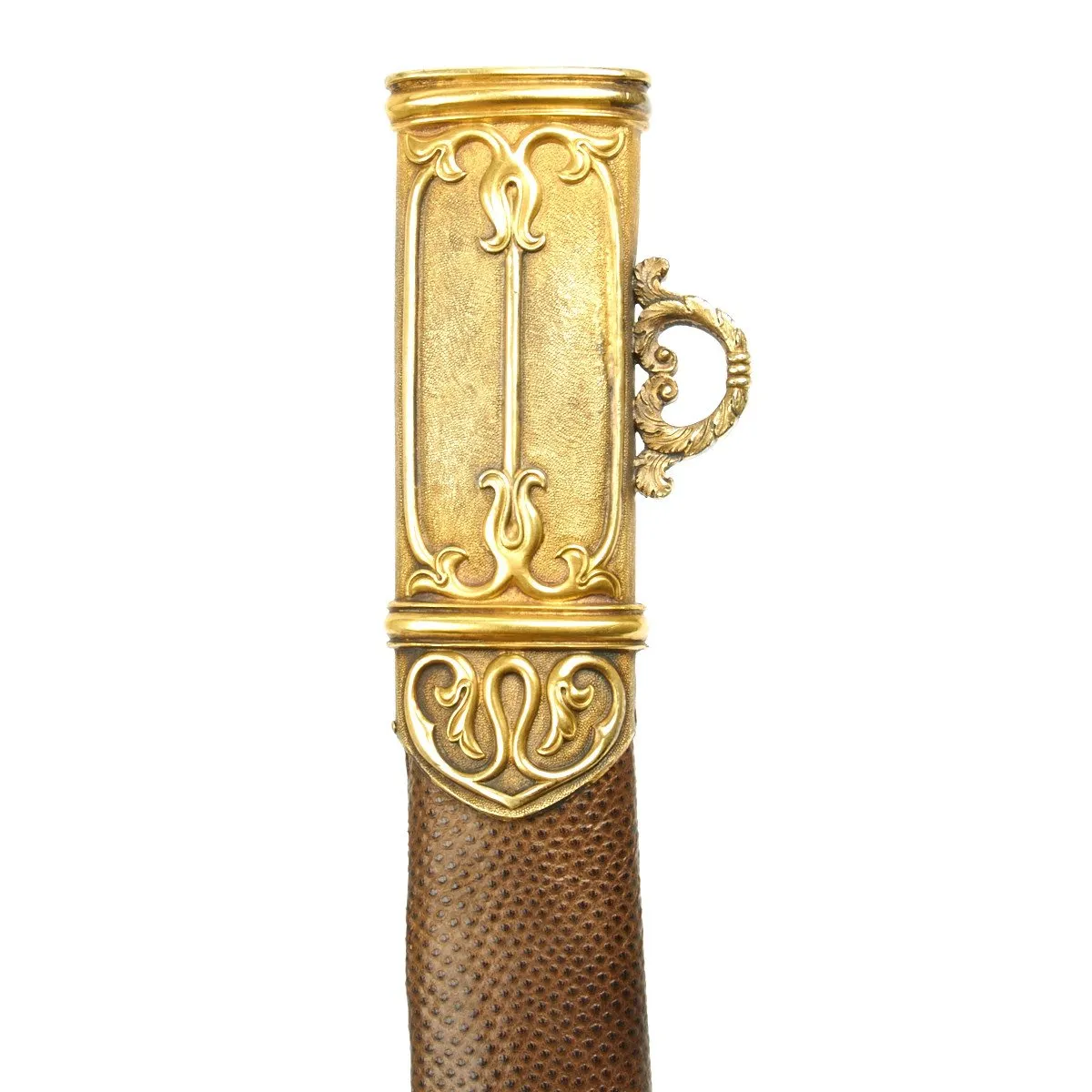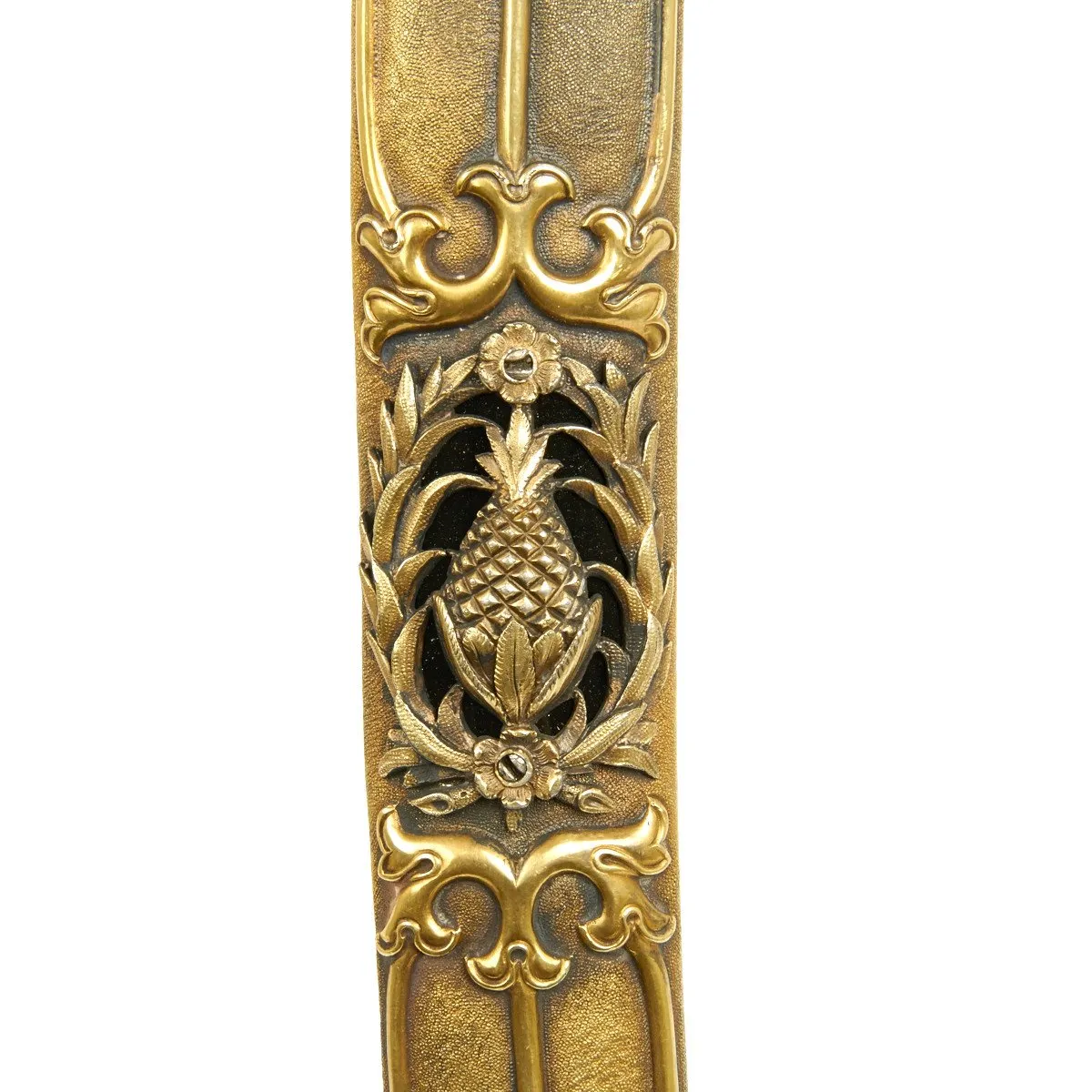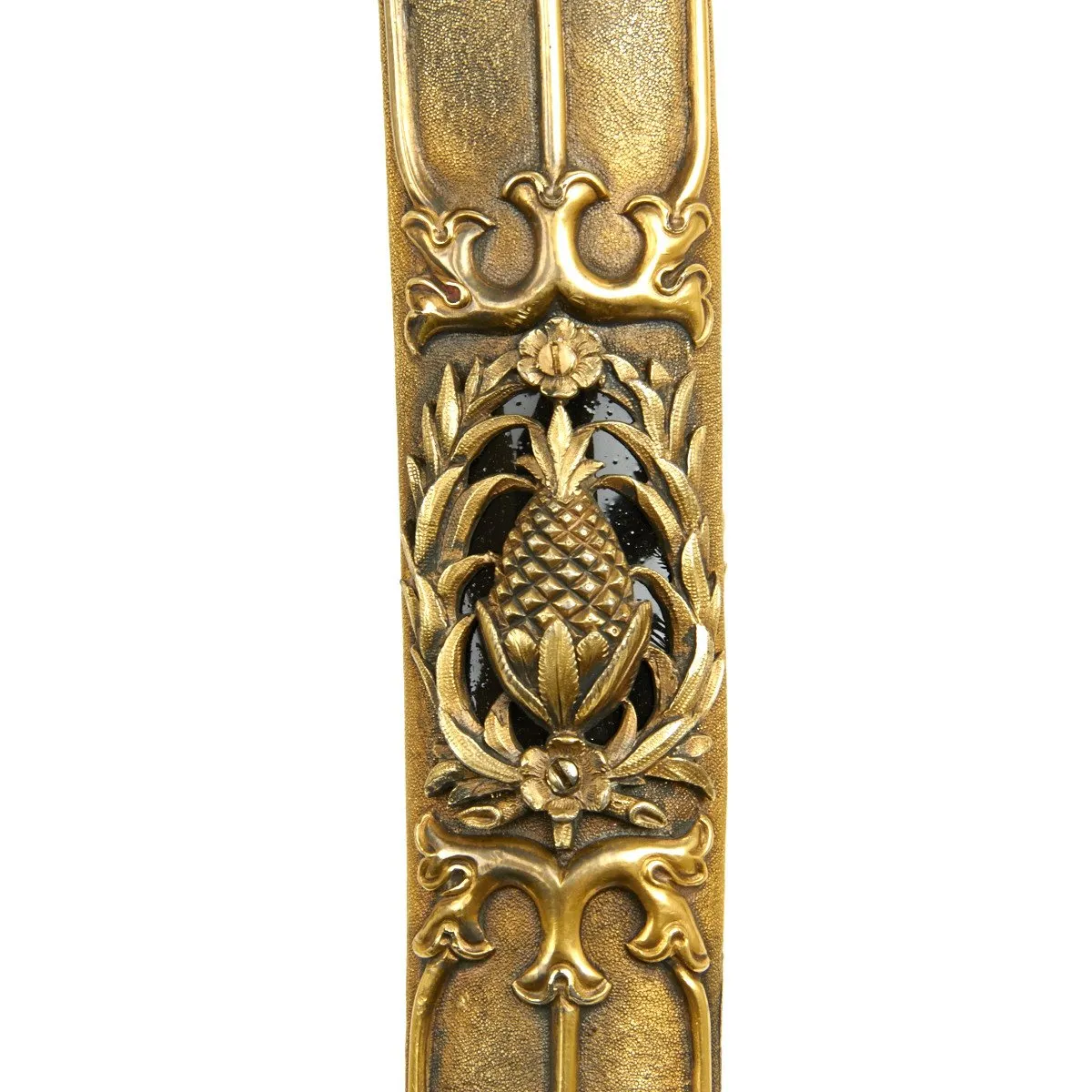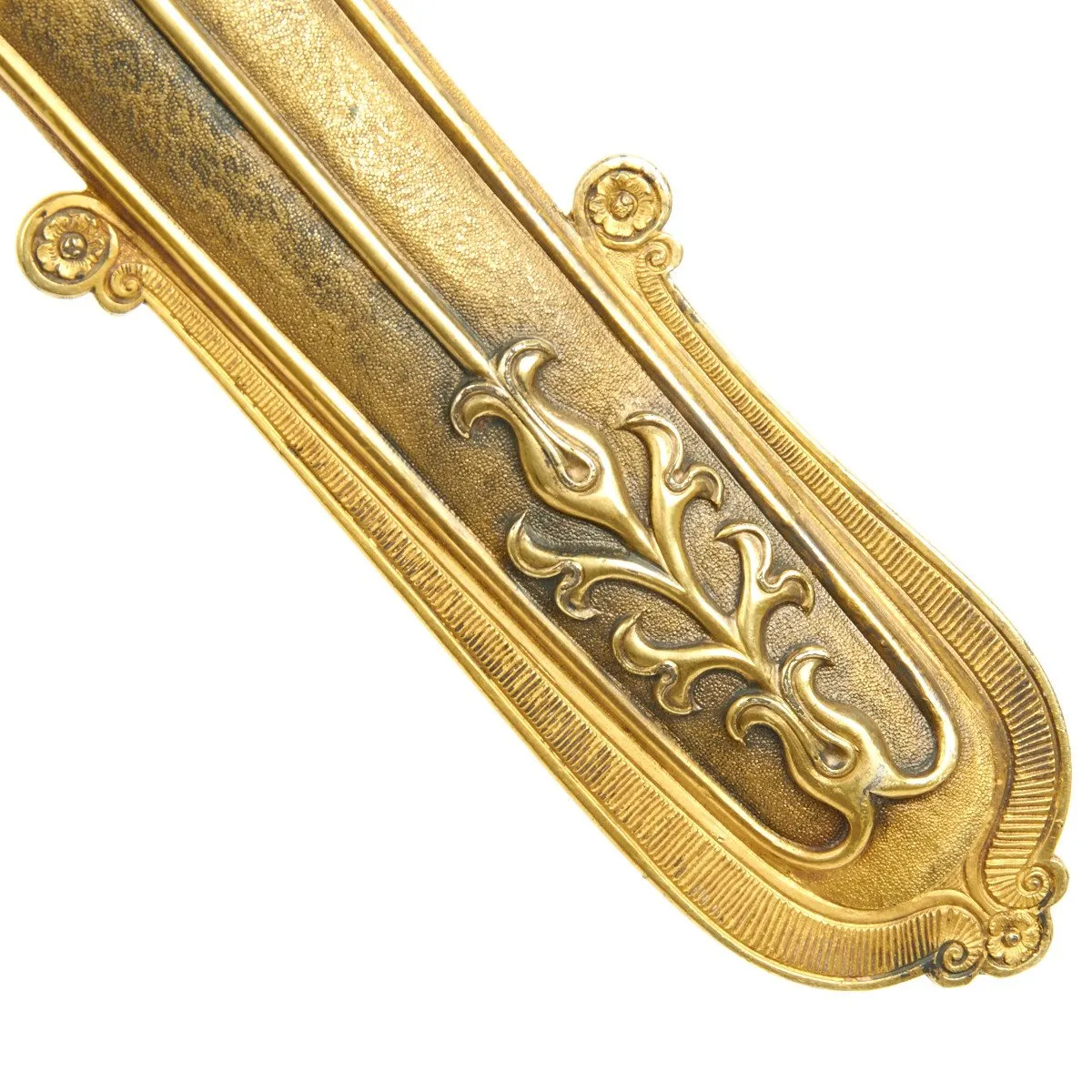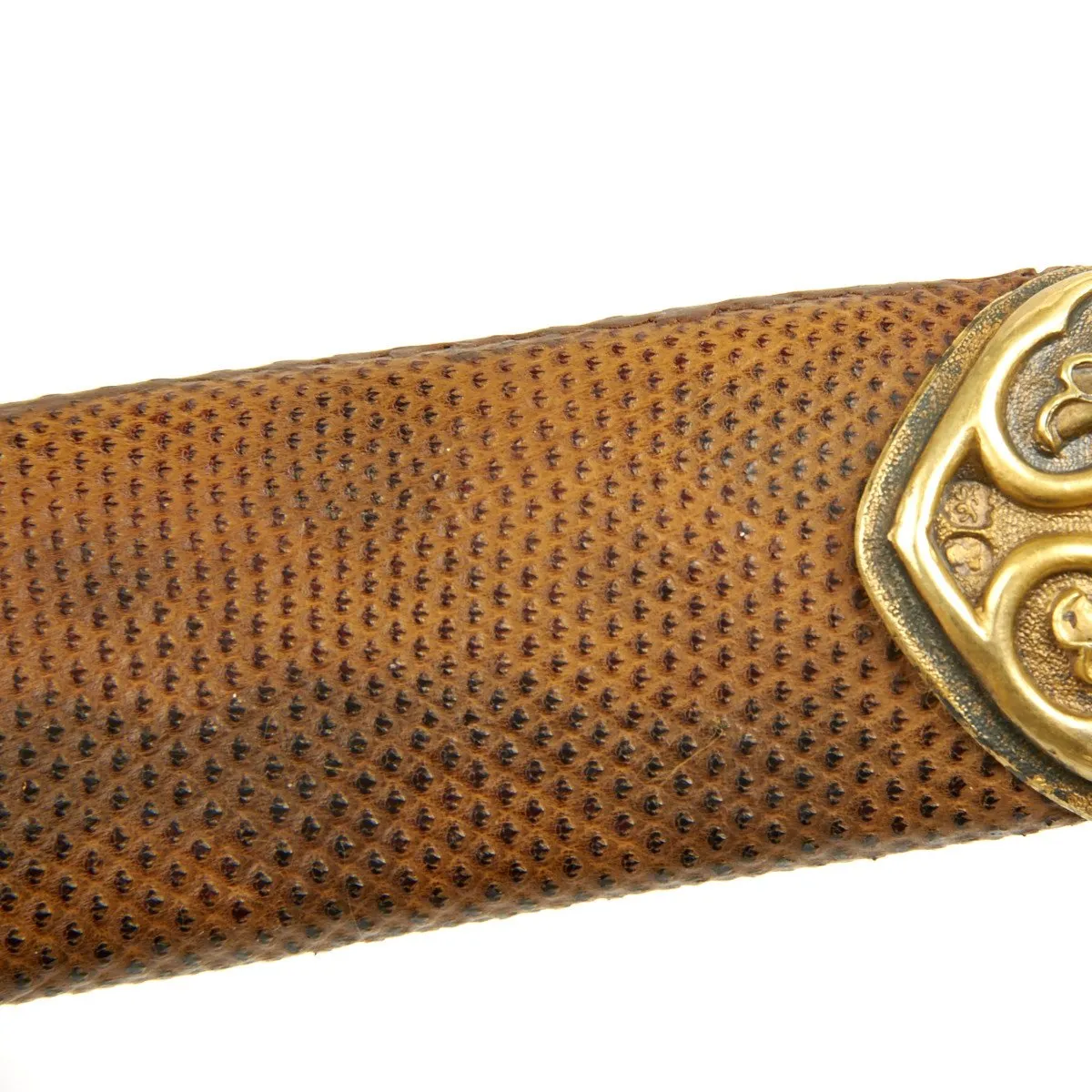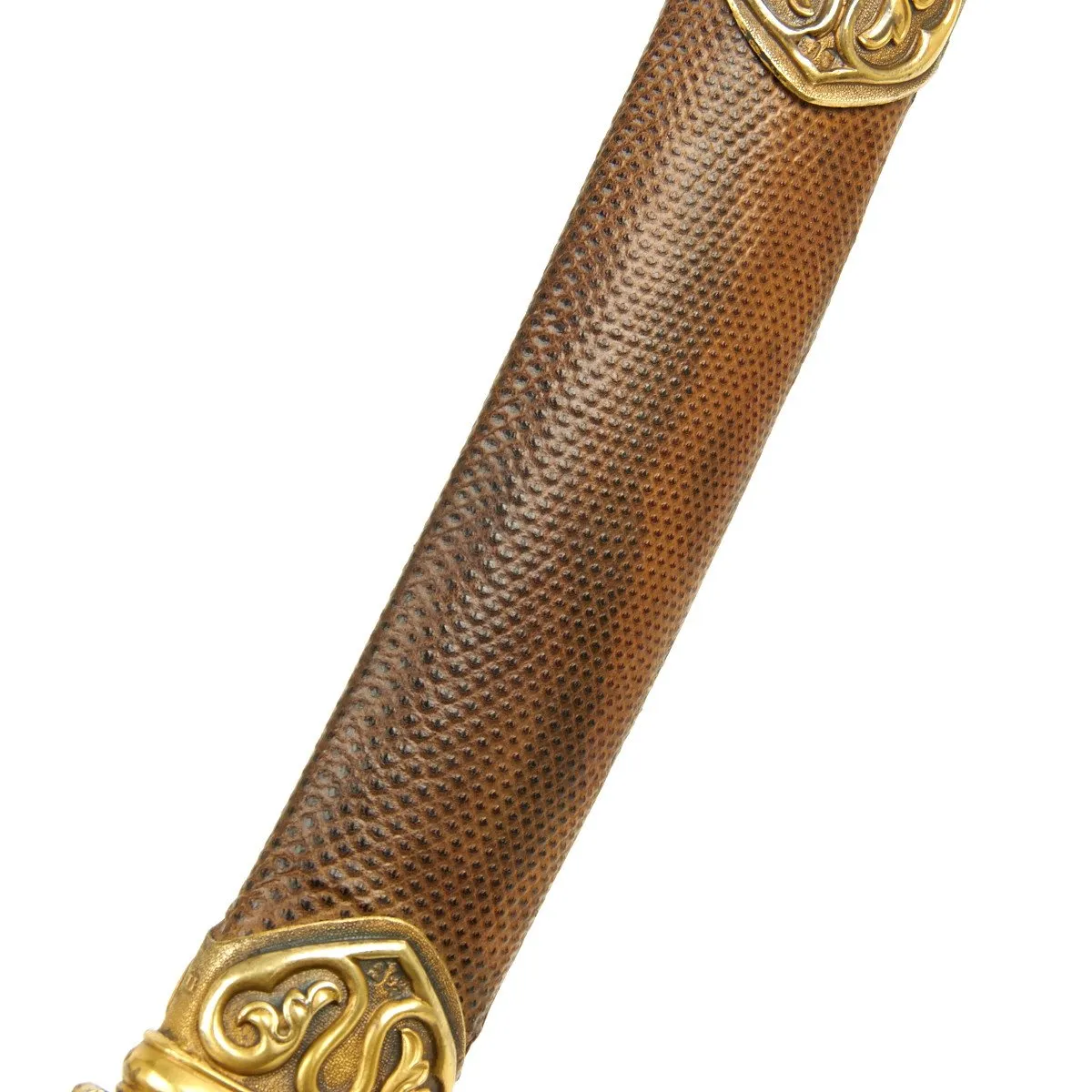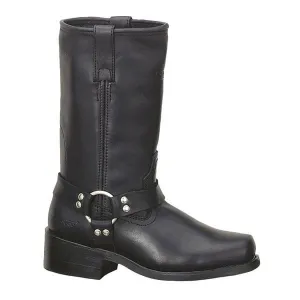Original Item: Presented to Lt. Col. Stephen Arthur Goodman, the Duke of Wellington's Deputy Judge Advocate, who served at Waterloo in 1815 [he was formerly a Lt Col of the 48th Foot]. This sword was presented to the Colonel some 8 years after Waterloo, in 1823, in his capacity as Lt.Col of the George Town Brigade of Militia, in the United Colony of Demerara-Essequibo [latterly British Guyana] while still on half pay as Col. Of the 48th Foot.
This beautiful sword is one of the most elaborate and beautiful British swords we have ever seen. The mounts are, in their beauty, equal to, or better, than a Lloyds Patriotic Fund sword. The hilt and scabbard mountings are in fact superior, in that Lloyds swords were bronze gilt, but for this sword they are SILVER gilt. The fully etched presentation inscription is most detailed, in that it relates most profusely to the Colonel who was not only at the time the Commandant of the George Town and Colony Brigade of Militia, he was also the Colony's Vendue-Master.
Prosser was one of the foremost and important sword smiths in England. His business patent declared he was 'Prosser maker to the King and the Royal Family, London'. According to May & Annis, Prosser kept this particular wording of Royal patent until 1827. Wm. Prosser (and John?) Sword Cutlers, were the King's sword makers and made for the Duke of Wellington. They also made swords for Count Platen, Aide de Camp to King of Hanover, who was ordering swords such as worn by Cold Stream Guards), in September 1818, and almost every great English family of the nobility used Prosser for their finest swords, from the 1790's till the 1830s. Prosser's presentation swords are a central part of the Royal Collection.
A brief history of the Colony is as follows: The first European to discover Guiana was Sir Walter Raleigh, an English explorer. The Dutch were the first Europeans to settle there, starting in the early 17th century, when they founded the colonies of Essequibo and Berbice, adding Demerar in the mid-18th century. The colony's capital was at George Town. The English had made at least two unsuccessful attempts in the 17th century to colonise the lands that would later be known as British Guiana. During the French Revolutionary Wars of the late 18th century, when the Netherlands were occupied by the French, and Great Britain and France were at war, Britain took over the colony in 1796.
In 1802 Britain returned the colonies to the Batavian Republic under the terms of the Treaty of Amiens. But, after resuming hostilities with France in the Napoleonic Wars in 1803, Britain seized the colonies again less than a year later. The three colonies were officially ceded to the United Kingdom in the Anglo-Dutch Treaty of 1814. In 1831, the administration Essequibo and Berbice was combined, and the united colony became known as British Guiana. In 1823 there was a notorious slave insurrection and rebellion by 12,000 of the colony's slaves, which was largely put down by the Lt Col, for which grateful thanks he received this sword from the governing body of the colony. The incident gained incredible fame and notoriety throughout the world, and it outraged the British public in many ways due to slave trading being abolished in the United Kingdom since the early 19th century. He was President of the Courts Martial of the captured ringleaders.
This delightful sword bears an eagle head pommel with blue enamel plaques surrounded by pineapple cartouches and a column for grip. The scabbard mounts are matching in their highly detailed form with pineapple embellishments over blue enamel plaques. The blade is stunningly etched with the Colony's crest and the presentation inscription:
By the INHABITANTS OF GEORGE TOWN & it's VICINITY for his unwearied exertions in the Public Service, at and after the breaking out of ye INSURRECTION
on the 18th of August 1823 and they beg the LIEUT. COLONEL to be assured that this small testament of their regard is accompanied with their sincerest wishes
that he may enjoy LONG LIFE, HAPPINESS and increased HONORS.
The blade also in engraved with the full Royal Cypher of KING GEORGE IV.
When received the original scabbard covering had been replaced with blue velvet because of the massive deterioration of the original material. This has now been painstakingly returned to the correct original presentation state with the scabbard being lined in snake skin. The scabbard mounts are sterling silver mercury gilded, each individual mounting bearing a hall mark. Each mount bears the pineapple symbol of the colony inlaid with a dark blue enamel backing. Hallmarks are also present on the cross guard and other locations.
This sword is of the very highest quality offered just wonderful condition commemorating the Great Slave Revolt of 1823 which in itself led to the abolishment of Slavery throughout the British Empire.
Demerara rebellion of 1823:
The Demerara rebellion of 1823 was an uprising involving more than 10,000 slaves that took place in the Crown colony of Demerara-Essequibo (now part of Guyana). The rebellion, which took place on 18 August 1823 and lasted for two days, was led by slaves with the highest status. In part they were reacting to poor treatment and a desire for freedom; in addition, there was a widespread, mistaken belief that Parliament had passed a law for emancipation, but it was being withheld by the colonial rulers. Instigated chiefly by Jack Gladstone, a slave at "Success" plantation, the rebellion also involved his father, Quamina, and other senior members of their church group. Its English pastor, John Smith, was implicated.
The largely non-violent rebellion was brutally crushed by the colonists under governor John Murray. They killed many slaves: estimates of the toll from fighting range from 100 to 250. After the insurrection was put down, the government sentenced another 45 men to death, and 27 were executed. The executed slaves' bodies were displayed in public for months afterwards as a deterrent to others. Jack was deported to the island of Saint Lucia after the rebellion following a clemency plea by Sir John Gladstone, the owner of "Success" plantation. John Smith, who had been court-martialed and was awaiting news of his appeal against a death sentence, died a martyr for the abolitionist cause.
News of Smith's death strengthened the abolitionist movement in Britain. Quamina, who is thought to have been the actual leader of the rebellion, was declared a national hero after Guyana's independence. Streets and monuments have been dedicated to him in the capital of Georgetown, Guyana.




